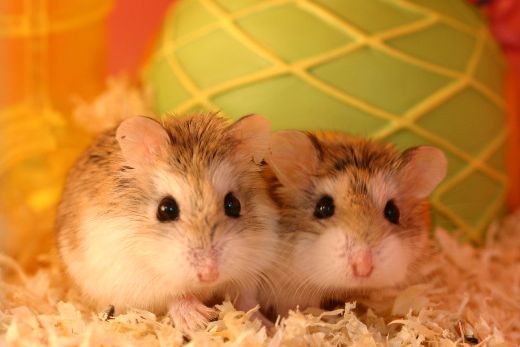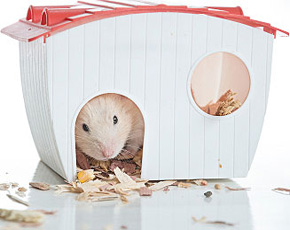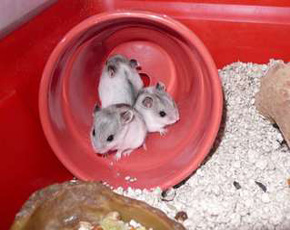
How To Care For A Hamster

Hamsters make good pets and few can resist these furry balls of fun. Many people don't realise there are actually two different species of domestic hamsters - Syrian and Dwarf. The Syrian is the most common of the pet hamster and it is also the largest. The Dwarf species are smaller and they include the Siberian, Roborovsky's Djungarian and Chinese. Different types of hamsters differ in terms of size and life span, so do some research before getting one as a pet.
Housing
 Hamsters can be kept together, except for Syrians, which are solitary animals and must live alone. They are normally kept within
enclosures made of stainless steel, durable plastic or glass. The cage should be at least 30 by 46cm and 15cm high for Dwarfs of
5 to 13cm. If yours is a Syrian hamster, consider a bigger housing of at least 60 by 30cm and 30cm tall. This is especially important
if the housing is a tank as tanks have poor ventilation. Hamsters like to burrow so bedding should be deep. Shredded paper,
wood shavings, and processed corn cob are ideal bedding materials. Provide soft materials such as plain facial tissues,
soft paper towels or recycled paper pellets. They like to use sand to clean their fur so it's a good idea to put a sand bath
in the cage so it can do what it would naturally do in the wild.
Hamsters can be kept together, except for Syrians, which are solitary animals and must live alone. They are normally kept within
enclosures made of stainless steel, durable plastic or glass. The cage should be at least 30 by 46cm and 15cm high for Dwarfs of
5 to 13cm. If yours is a Syrian hamster, consider a bigger housing of at least 60 by 30cm and 30cm tall. This is especially important
if the housing is a tank as tanks have poor ventilation. Hamsters like to burrow so bedding should be deep. Shredded paper,
wood shavings, and processed corn cob are ideal bedding materials. Provide soft materials such as plain facial tissues,
soft paper towels or recycled paper pellets. They like to use sand to clean their fur so it's a good idea to put a sand bath
in the cage so it can do what it would naturally do in the wild.
Environment
 Hamster cages should be kept away from windows, doors or air vents and be housed in areas that are dimly lit and quiet. A clean environment is also essential to pet hamster care. Make sure you pick up the hamster poop faily and give the cage a thorough cleaning once a month.
Hamster cages should be kept away from windows, doors or air vents and be housed in areas that are dimly lit and quiet. A clean environment is also essential to pet hamster care. Make sure you pick up the hamster poop faily and give the cage a thorough cleaning once a month.
